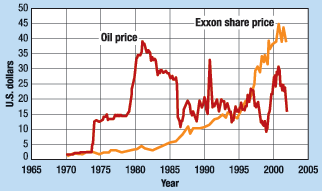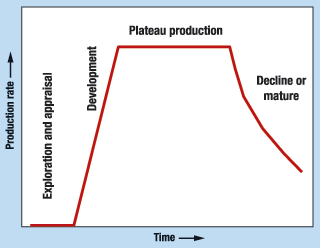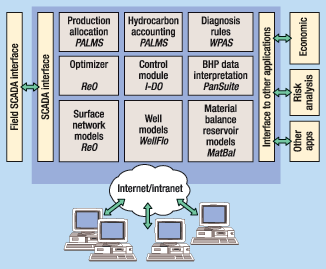Improving business performance using intelligent technology and asset management
INTELLIGENT WELL COMPLETIONSImproving performance using new technology and intelligent asset managementTechnologies now available and under development allow true intelligent wells / fields to lower costs and increase production / reservesCampbell Airlie, Technical Director, Edinburgh Petroleum Services (EPS) Ltd., Edinburgh, Scotland In this presentation, the author discusses / develops the concept of the "convergence" of several technologies that helped develop the present oil/gas industry. From a focus on exploration / appraisal-development, the 1990s saw the convergence of technologies and business processes in the production side of upstream operations. The discussion then shifts to "where we are today" and the evolution of intelligent wells as production / reserve enhancing tools. Besides new fields, there are also "hidden giants" within known producing areas awaiting optimized development. An example in Venezuela’s Lake Maracaibo is presented. The author says in his conclusion that we now have the technologies to unlock the potential of giant fields that can provide $100 billion additional income per year. Introduction The oil and gas industry has been one of the most profitable businesses on earth for over a hundred years, and has continued to be profitable despite large periodic variations in the oil price. The average oil price over the past 140 years has been around $15/bbl, with prices as high as $270/bbl briefly in 1861 – both numbers in 2001 money – or some 25 times the price of its low point in recent years. Even since the first oil shock of 1973, the real price has varied by a factor of five. With the uncertainty that such variation in product prices brings – and therefore, increased business risk – many industries would have collapsed. Our industry thrives on these challenges, Fig. 1.
There are many reasons that our industry has been able to adapt to its cycles; three of these are: 1) the raw product just "pours out of the ground" – a description perhaps elicited by people not in the industry; 2) its nimbleness to exploit resources from lower-cost areas, wherever they are worldwide; and 3) perhaps most important, we have continually reduced lifting costs by introducing new technologies. These technologies have usually been related to finding, through better exploration and appraisal methods, or by developing through better drilling and completion techniques, and less related to the plateau and mature or declining phases of field life, Fig. 2.
However, in the first quarter of this century, we will pass a unique milestone in the history of oil, i.e., where forecast demand outstrips forecast supply globally. This suggests that, while still improving finding and developing, we need to fundamentally improve performance from existing producing fields. We must do this by optimizing all of the resources at our disposal and maximizing the value they provide. These resources are not only technology, but also people and processes, which, when applied in the most effective way, allow us to successfully implement new methods that reduce costs, enhance production and improve profitability. The successful implementation of new technology and methods is what we call Intelligent Asset Management (i-AM).* The following presentation describes what technologies are available and how we should ensure that they work for us, but first, let us consider historically how various technologies have helped our industry evolve to what it is today. Technology Convergence in E&D In the late 1800s, the convergence of several technologies helped the industry increase production and reach wider markets. Drilling itself improved, albeit marginally but, crucially, railroads and telegraph – fairly recent developments at that time – were major contributors to distribution / marketing of oil and its products. The impact of all three industries being in existence at the same time made oil one of the fastest growing industries in the world, which was able to sustain growth as demand increased due to development of the motor car. Throughout the 20th century, we have seen new technologies introduced which helped to better identify oil/gas fields, and exploit them – seismic, wireline logging, offshore technology and directional drilling, to name but a few. Other industries which came into existence in the 1950s were space, solid-state electronics and nuclear. These three would provide fundamental technological building blocks of our modern oil industry. By the 1970s – 1980s, most of the world’s giant oil fields had been found, and attention was being given to finding smaller reserves. The advent of 3-D seismic provided a step change in exploration success, and continues to do so, with success rates improving from some 1 in 10 – 15 to 1 in 4. The technology that allowed the explosion of 3-D seismic was computing power – Moore’s Law, which states that the transistor density on silicon chips doubles every 18 months, has been valid since the 1960s and looks set to continue to apply for years to come. Exploration in deeper and rougher waters, where we have been increasingly active, depends on improved seismic equipment, but even more so on computer processing, GPS and satellite communications. The analysis of high-resolution seismic, and the advent of 3-D visualization have been instrumental in the interpretation of ever-smaller reservoirs we are now exploiting. The 1980s saw a step change in drilling technologies which, coupled with improved seismic, allowed us to better develop new and existing fields; these step changes were horizontal drilling and measurement while drilling, MWD. Although most of the advances making this possible were direct downhole hardware, the importance of telemetry systems and signal processing, some originating in the nuclear industry, were essential. These techniques have now further developed into providing multi-lateral and "exotic" wells, which form a significant part of what we now call "smart" or "intelligent" wells. With the growing use of computational methods in the 1960s and 1970s, on the back of the supercomputers of the day, it was becoming feasible to consider modeling of reservoir, production and process systems. The refineries were making substantial use of Supervisory Control and Data Acquisition (SCADA) systems to monitor and control, and were increasingly able to make use of the computing methods to improve yields, through process simulation and optimization. The nuclear industry – through its need for remote monitoring and control, and fluid modeling – and the electronics / computing / IT industries, had also provided essential technology. Technologies / Business Processes Convergence in Production Until the 1990s, most technological advances in our industry had focused on the exploration / appraisal-development part of the field-life cycle. As many of the global fields in production were, by then, on decline, interest increased in how production could be maximized from older wells / mature fields in the plateau and decline phases of field life. The main areas of technology development were: hardware in completions and artificial lift, and in downhole measurements; and software to better design wells, analyze well performance, troubleshoot and ultimately optimize production from existing fields. In the area of business processes, companies were simultaneously changing to be more business-focused on production assets; and many were beginning to change their organization from functionally based to asset-based. Additionally, companies in all industries were re-engineering themselves to focus on core competencies, and some oil companies were outsourcing what had previously been considered absolutely core activity, e.g., reservoir management and accountancy. This was to prove to be the start of major changes to the whole concept of supply chain management (SCM) in our industry; and this area continues to be vigorously pursued and developed today. The above processes were driven in the 1990s by the substantial variations in oil price, Fig. 1, and in parallel – in an effort to maintain profitability and reposition themselves in a new market reality – there have been many mergers / acquisitions over the latter part of the 1990s, and continuing today. Where Are We Today? Technology is being developed at an ever-increasing rate in all areas of our business. The demographics of the industry is one of an aging workforce – since the continual upheavals and cyclic nature of the industry through the 1990s resulted in lower recruitment than is healthy for an industry as fast-changing as ours. The main producing regions of the world are on production decline, and those not yet there will be soon. Ever-smaller fields are being developed, especially offshore and in remote locations. And upstream environmental pressures are increasing. The result is that we need to squeeze out more oil from more places using fewer people. Convergent Technologies / Processes For The Future Exploration to development phases of field life continue to stimulate technology development in seismic, drilling, logging and completions. Smaller fields are being developed by subsea wells, and fields using FPSOs are on the increase. Many companies are introducing intelligent wells (IWs) as a low-lifting-cost alternative over field life, albeit the cost of such wells and completions can be substantially higher than conventional wells. Many IWs are going into the new, smaller fields being brought onstream. The purpose of using IWs includes increased recovery factor, reduced surface facilities, requirement for fewer wells, accelerated production and reduced intervention. The main features of existing IWs are control and measurement; most smart completions require these measurements to be analyzed by engineers, and then the well-operating condition altered, either manually or via SCADA. Currently, this is a key area needing development – huge volumes of data are being gathered, but due to lack of appropriate data management, well / completion models and skilled people, much of this important data is not being used to best effect. In addition to new fields, there are also the so-called hidden giants. These are not yet-to-be-discovered fields, or fields awaiting development. They are the existing fields in production that can be re-vitalized by, e.g., optimizing the reservoir / wells / facilities that are already in place, or by systematically reducing downtime through loss management. Examples of what can be achieved by applying currently available technology are:
An average production increase of 10% globally would result in additional income of $50 billion annually from oil, and possibly the same again from gas. The technologies now available that can help achieve this are:
These technologies have been developing somewhat independently for some time, but their integration can lead to the delivery of the "hidden giants." One of the keys to proper integration of these technologies is appropriate domain knowledge across the production arena. The way to unlock the hidden giants is through integration / implementation of the above technologies, coupled with well and surface hardware described earlier. Hardware alone will not suffice, and data gathering capacity will not produce benefit. Appropriate modeling of our systems, coupled with optimization and control – either fully automated or indeed manual – is essential to unlock the value. One such system to integrate these workflows is illustrated in Fig. 3.
Hidden Giant Example Petroleos de Venezuela (PDVSA) had identified an opportunity to improve the performance of mature fields in Lake Maracaibo as a strategy to increase overall production by the corporation. Maracaibo has in excess of 5,000 wells, and a pilot project of some 250 wells was used to prove the technique. Working with EPS, a daily operations solution was implemented using ReO optimization software interfaced to the field SCADA systems. The solution required construction of detailed models of the wells and the surface production facilities. The pilot phase resulted in identified gains of between 2% and 7% in defined sections of the different fields in the project, generating a total additional contribution to bottom-line performance of $36 million per year. Success of the first phase has given PDVSA the required validation to proceed with the rollout of the technology to other field areas, and this is projected to improve financial performance by around $274 million per year.1 Conclusions The technologies now available and being continually developed to allow true intelligent wells and fields that provide substantial opportunity to lower lifting costs and increase production and reserves. These technologies can be applied to existing fields, but are commonly being leveraged on new and smaller fields. Given the rate of increase of oil consumption and the limited reserves / production capacity we will have in the next two decades, it is essential that we optimize current producing fields. We are now in a position where we have the various technologies necessary to truly unlock the potential of the hidden giants, providing some $100 billion additional income per year. The industry must work together to seize this opportunity. Note: This article contains material introduced by the author in his presentation, "Field management of maturing reservoirs," presented at SMi’s Smart Reservoirs III Conference, London, July 2 – 3, 2001. Literature Cited 1 McKie, C. J., et al., "Economic benefits from automated optimization of high pressure gas usage in an oil production system," paper SPE 67187, presented at the SPE 2001 Production and Operations Symposium, Oklahoma City, Oklahoma, March 26 – 27.
|
||||||||||||||||||||||
- Coiled tubing drilling’s role in the energy transition (March 2024)
- Using data to create new completion efficiencies (February 2024)
- Digital tool kit enhances real-time decision-making to improve drilling efficiency and performance (February 2024)
- E&P outside the U.S. maintains a disciplined pace (February 2024)
- U.S. operators reduce activity as crude prices plunge (February 2024)
- Drilling advances (January 2024)
- Applying ultra-deep LWD resistivity technology successfully in a SAGD operation (May 2019)
- Adoption of wireless intelligent completions advances (May 2019)
- Majors double down as takeaway crunch eases (April 2019)
- What’s new in well logging and formation evaluation (April 2019)
- Qualification of a 20,000-psi subsea BOP: A collaborative approach (February 2019)
- ConocoPhillips’ Greg Leveille sees rapid trajectory of technical advancement continuing (February 2019)






